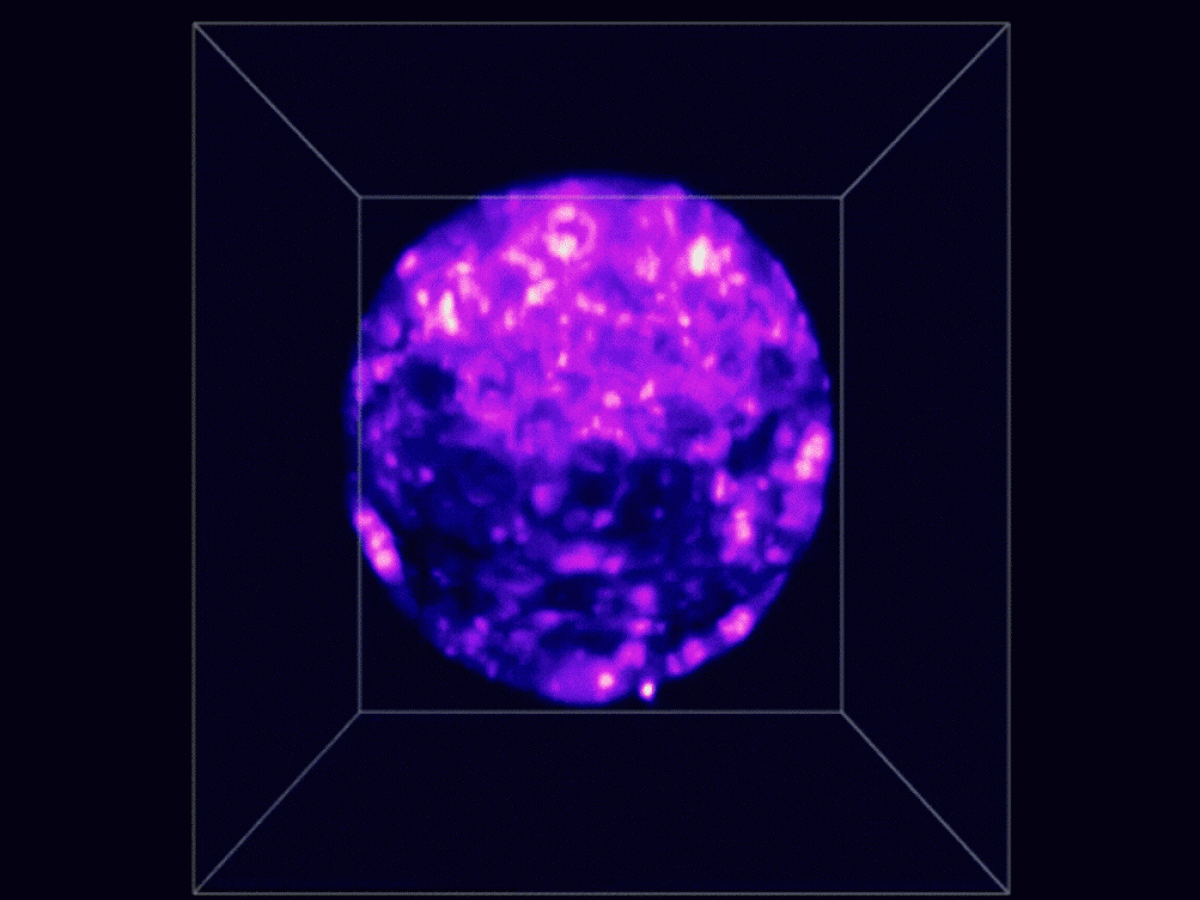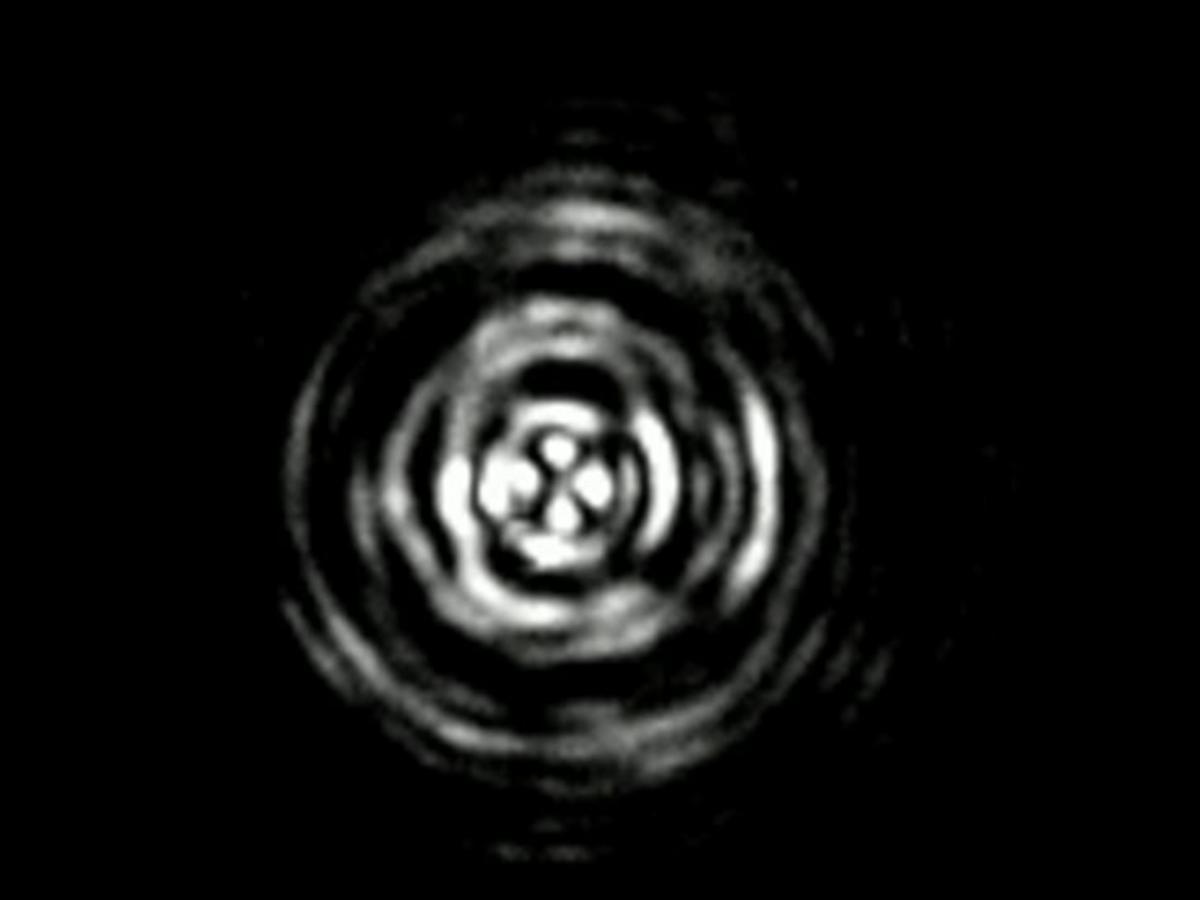Research
Our research themes aim to:
- improve new imaging and microscopy devices addressing imaging at depth
- develop non-invasive assessments of cell health
- implement classical and quantum concepts for imaging
- translate light-based imaging technologies to biological research or industry
Themes
- Light sheet imaging
- Trapping with light and sound
- Precision measurement with speckle
- Structured light
In light sheet microscopy, samples are illuminated with a broad sheet of light, allowing for faster image acquisition and lower sample exposure, thus leading to lower levels of “light damage”. This makes this form of imaging ideal for gaining new insights in non-invasive sample analysis. In turn this may shed light on numerous biological processes including the development of disease. In particular, we harness propagation invariant beams (Airy and Bessel) in our light sheet microscopes to increase the field of view deeper into the sample.
Together with the Reproductive Success group lead by A/Prof Kylie Dunning, we investigate the use of light sheet microscopy techniques to assess embryo health by performing metabolic imaging.
This research is being conducted by PhD candidate Ramsés Bautista Gonzalez, Dr Darren Chow and Dr Avinash Upadhya.

3D image of live mouse blastocyst using light sheet microscopy
The wave like nature of light and sound means they both possess momentum. Transfer of momentum can lead to forces either optical or acoustic in origin. Our work in this area explores the use of optical forces for studies of microrheology in biology as well as exploring the classical-quantum interface by levitating microparticles in vacuum. Further studies focus on the use of acoustic forces for trapping and manipulating larger biological specimens.
These three sub-projects are described below:
-
Optical trapping
We develop novel trapping techniques to observe, measure and analyse biomechanical properties in the fertilised embryo to non-invasively quantify embryo quality and health. This work is carried out through a joint PhD project by PhD candidate Carl Campugan from the Reproductive Success Group of A/Prof Kylie Dunning, with support from Dr Chris Perrella. This work is in collaboration with A/Prof Amanda Wright (University of Nottingham, United Kingdom) on Optical Manipulation.

-
Levitated Optomechanics
Our work to date has focused on levitating micron sized inert particles of silica and particularly vaterite. This latter material is birefringent allowing us to spin such particles in vacuum through the transfer of spin angular momentum. This has led to a number of studies including the fastest ever man-made rotation [Guinness Book of World Records 2015], multiparticle trapping, optical binding and sympathetic cooling of particles. Our studies are also allowing us to understand coupling between the rotational and translational degrees of freedom leading to very high Q value resonators (>108) for sensing. This research is being conducted by PhD candidate Aman Punse, Dr Damien Raynal, and Dr Chris Perrella.

Levitated SiO2 microparticle
-
Acoustic trapping
Sound waves are able to behave as elastic deformations propagating within a medium, thus we are able to utilise their physical momentum to manipulate particles and small objects. We are interested in exploring how such an acoustic trapping system can be used in the context of imaging, particularly suspending cells in medium in a manner that replicates the in vivo environment more so than a petri dish.
This work is carried out by Dr Tan Dai Nguyen and Dr Megan Lim, lead by Reproductive Success group leader A/Prof Kylie Dunning.
When laser light hits a rough surface, the light is scattered in many directions and the resultant interference pattern has a grainy appearance which we call speckle. This speckle is often considered as a loss of any information contained in the laser light, as much research has been devoted to avoiding it. However, the speckle is actually rich in information about both the laser and the scatterer. We have used this phenomenon to perform highly accurate measurements of laser parameters, such as attometre-resolved wavelength measurement and characterisation of the orbital angular momentum and polarisation of the light beam. Moreover, we can use speckle to probe environmental changes, such as resolving changes of refractive index at 10-9 and picometre-level displacements of the scattering medium.
This research is being conducted by by PhD candidates Gabriel Britto Monteiro, Zane Peterkovic and Dr Chris Perrella.
This area explores the propagation and use of unusual transverse laser profiles for topics such as imaging at depth and manipulation.
Dr Ralf Mouthaan is involved in this work with PhD candidate Ané Kritzinger.
